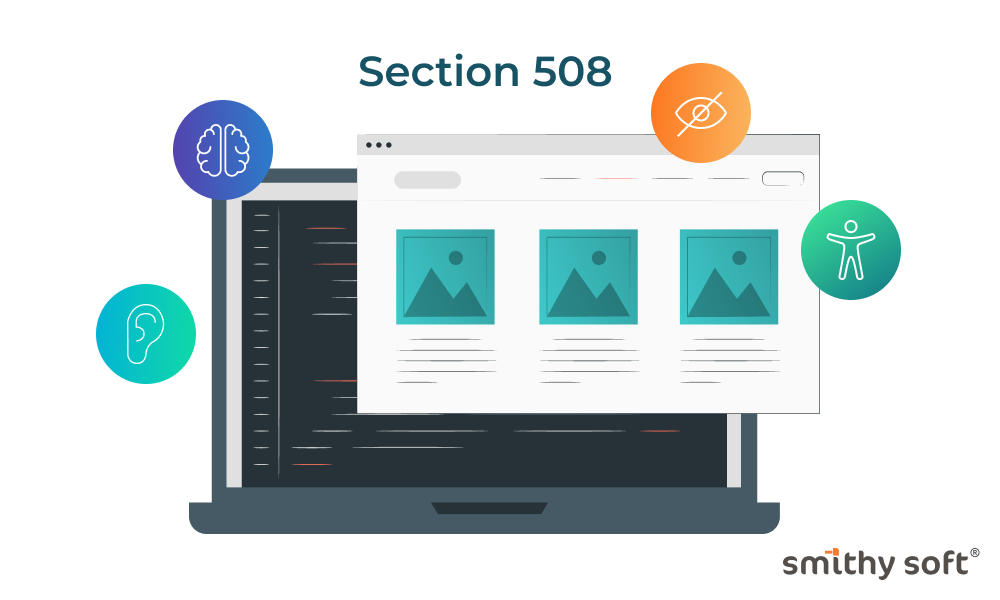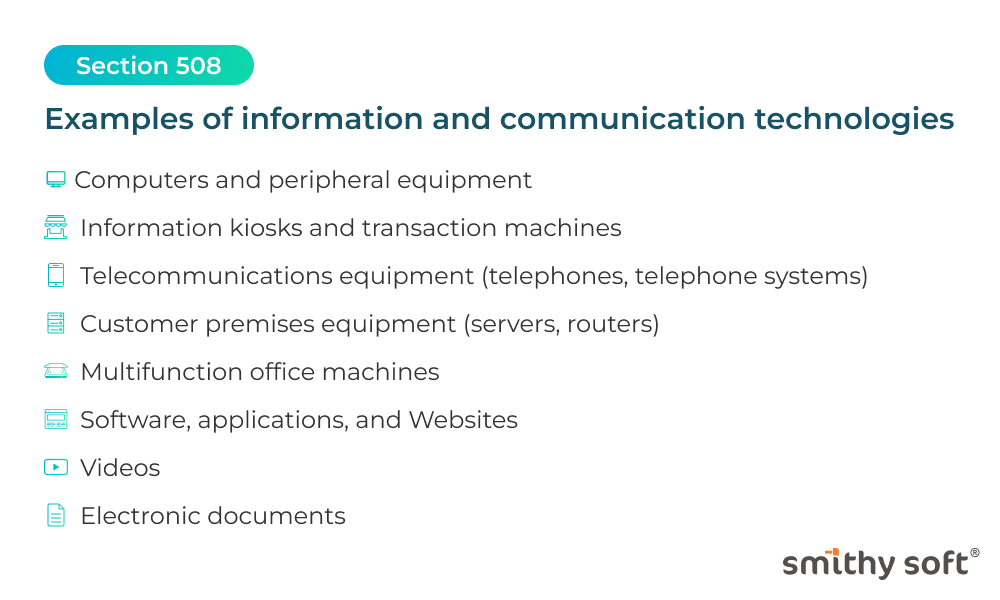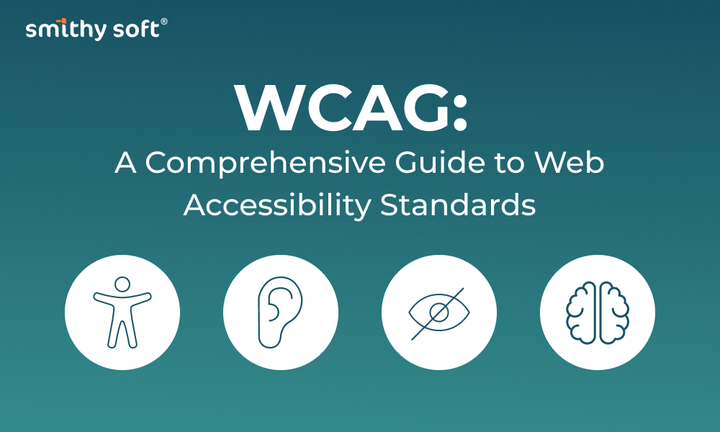What is Section 508, and Why is it important to follow

Section 508 is an important law in the United States that makes it so that digital technology and electronic content must be accessible to people with disabilities. The USA Accessibility laws ensure that anyone can use a particular product or service, no matter what their abilities are. Accessibility does not discriminate but rather equalizes everyone, giving EVERYONE the same opportunities.
What is Section 508?
Section 508 of the Rehabilitation Act is a reform to the original Act of 1973. The Rehabilitation Act was the first major civil rights act in the United States to expand federal protections for people with disabilities.
In 1998, Congress made a change to a law about technology called the Rehabilitation Act of 1973. The change said that federal agencies had to make their electronic and information technology (EIT) accessible to people with disabilities. This law, 29 U.S.C § 794d, applies to all federal agencies when they create, purchase, maintain, or use electronic and information technology. Section 508 demands agencies to give disabled public access to information that non-disabled people have.
The US Access Board is in charge of creating accessibility standards for Information and Communication Technology (ICT) to include in regulations that govern how the federal government buys technology. On January 18, 2017, the Access Board released a final rule that updated the accessibility requirements covered by Section 508. And also they updated the guidelines for telecommunications equipment. This final rule became effective on January 18, 2018.
The update also brought these requirements into line with other US and global guidelines and standards. That includes the ones set by the European Commission and the Web Content Accessibility Guidelines (WCAG 2.0) from the World Wide Web Consortium (W3C). These Guidelines are a well-known international agreement on how to make web content and ICT easier for people to use.
Section 508 requirements
Section 508 compliance requires US federal agencies to create and use technology that is accessible to people with disabilities.
It states that all people in the United States must have equal access to information from federal agencies. It touches upon not only publicly available web content. That also includes intranet pages, internal and external software, mobile applications, video and other media content, online forms, and electronic documents.
The instructions for these digital assets and help for them should also be accessible.
Who is covered by Section 508?
Section 508 standards are mandatory and set strict digital accessibility requirements for all US federal government entities. Every federal department or agency, including the United States Postal Service.
But Section 508 also has implications for third-party providers.
To achieve Section 508 compliance, federal agencies must create, purchase, and use accessible information and communications technology (ICT) products. This includes websites, software, internal tools, and electronic documents.
Companies selling digital products to the federal government must prove that those products meet Section 508 standards. As the law applies to third-party technologies that's why they risk jeopardizing new and existing contracts.
Thus, private sector organizations that contract with federal agencies are also required to comply with Section 508. They can do it by ensuring equal access to any ICT they provide to federal agencies.
What exactly does Section 508 cover?
This law applies to all information and communication technologies. That is any equipment or system used to create, transform, duplicate, or access information and data.

The products that must be accessible to persons with disabilities include quite a wide range:
• Things like desktops, mobile phones, and other telecommunications products that interact with users in real time;
• Information booths that give information in public places such as Federal buildings and hospitals;
• Documents shared on websites (like PDFs, Word, Excel, and PowerPoint);
• Multifunction machines that can scan, fax, and print documents, etc.;
• Websites with information that users access from the Internet and private networks.
Section 508 applies not only to ICT products used by federal agency employees but also to those that the agencies made available to the public.
How do I ensure Section 508 compliance?
To meet Section 508 requirements, digital products must follow standards. That also includes those fixed in the Web Content Accessibility Guidelines (WCAG). These guidelines aim to ensure that websites are easy for all users to understand, operate, and navigate. For each of these four categories, WCAG provides testable success criteria and practical guidance on how to fulfill them.
Organizations can attain one of three levels of conformance: A, AA, or AAA, depending on how many WCAG success criteria they meet. Level A indicates minimum compliance, while AAA represents the peak level of accessibility.
Organizations should test their products and services for the WCAG criteria if they want to become compliant since Section 508 requires conformance with WCAG 2.0 (Level AA).
Section 508 Technical Standards
Here are some of them, according to WCAG 2.0:
- Users with fine motor skill impairments need to be able to perform functions using only a keyboard. This requires using the right HTML code structures.
- Any interactive elements on-screen should be clearly highlighted upon receiving focus.
- Text alternatives for non-text elements are required. Alt-text on images and text transcripts for audio recordings are prime examples.
- The right color contrast is important, but color should never be the sole form of communication on the page.
- Documents should be arranged in a way that doesn’t require an associated style sheet. Web pages shouldn’t need a Cascading Style Sheet (CSS) to be viewed or navigated.
- An alternative way to display the information needs to be implemented if server-side image maps are requested to make it compatible with screen readers.
- Tables should be coded so that it’s clear what each cell is: a header, column, or row. This makes it easier for assistive technology to understand.
- Avoid or remove any flickering or flashing content. If it is used, objects should not flash more than three times per second.
- Repetitive navigation links and block skip options must be enabled.
- Users must be told when a timed response is in place and be able to notify if more time is needed.
How to check your product for Section 508 compliance?
Checking your digital product or service for compliance with current accessibility standards is important and necessary. The check will give you a general idea of what “accessibility level” you are at and what steps you need to take to avoid costly mistakes and lawsuits.
There are various online tools for assessing compliance with WCAG requirements. However, only a team of specialists can identify potential accessibility issues by conducting comprehensive research.
SmithySoft can help you with this! Moreover, we will not only help with conducting a detailed accessibility analysis but also offer effective solutions to improve your site or application and its compliance with current legislation.
General Digital Accessibility Assessment in 2024
Governmentwide Section 508 Assessment provides a deeper understanding of digital accessibility across the federal government. This report provides a detailed analysis of the current state of Section 508 compliance and digital accessibility efforts at the federal level.
The government notes that digital accessibility at the federal level is gradually increasing. At the same time, more than 60% of respondents reported no change in the compliance of their ICT content. Insufficient staffing and resources remain a barrier reported by respondents. It limits the ability to effectively test, remediate, and ensure accessibility.
Overall, in 2024, approximately one-third (or fewer) of the most popular ICT reporting entities are fully compliant. 23% of public web pages, 25% of public documents, 34% of videos.
Less than half of entities reported full compliance of ICT products commonly used by federal employees and the public. They were: authoring and survey tools, learning management systems, performance portals, video players, and chat rooms.
Overall, Section 508 testing and integration into the technology lifecycle have improved over the past year. Most entities reported using a combination of automated and manual tools for deep testing.
Increasingly, organizations are testing web content and integrating Section 508 reviews into digital content before publication. But an inadequate or absent Section 508 assessment early in the ICT lifecycle remains a serious problem. 41% of respondents reported that they sometimes or never integrate Section 508 compliance into technology lifecycle activities or are unsure of doing so promptly.
So, to avoid being sued for non-compliance with Section 508 requirements, you should conduct timely audits, correct errors, and publish Accessibility Statements on your digital asset. Section 508 forces federal agencies to have digital accessibility statements, and the General Services Administration offers guidance on how to write an accurate statement.
CONCLUSION
We have thoroughly reviewed the main provisions of Section 508 of the Rehabilitation Act. Use it as a basis for creating your own Section 508 checklist, or contact us to help you with the Accessibility analysis and implementation of these standards. Remember, ensuring accessibility is not only a legal obligation but also an opportunity to expand your audience and make your product or service accessible to everyone.


